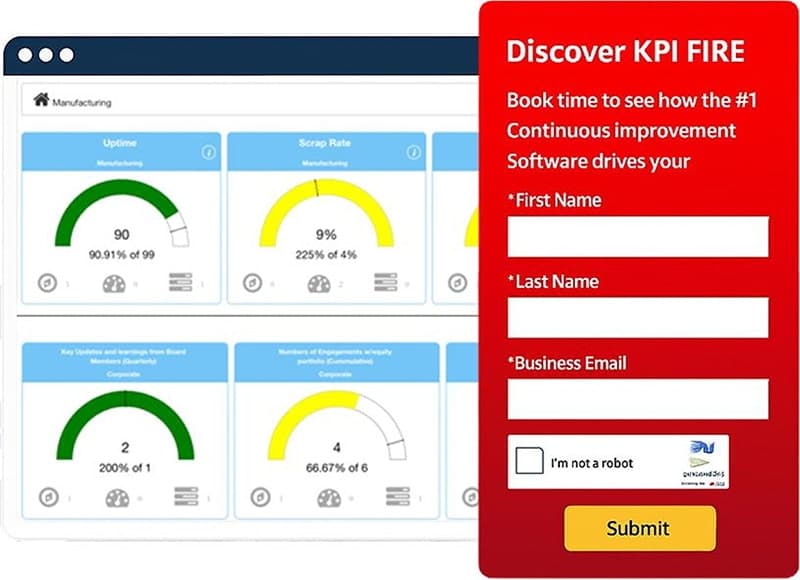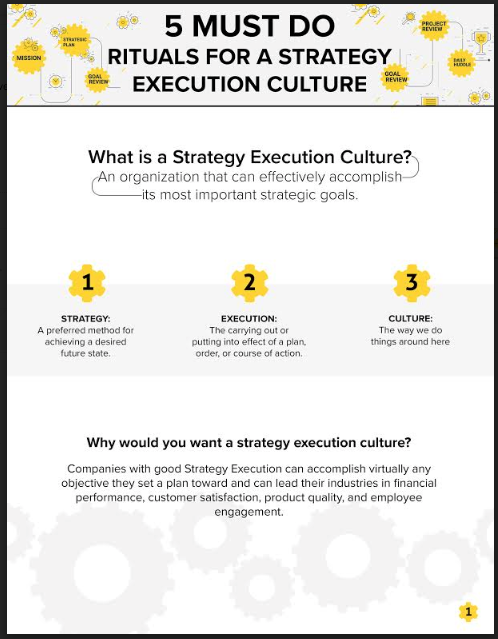Free Guide: How to Build an Execution Culture
This free strategy execution guide includes tips to:
- Conduct a strategy session
- Create a visual management system
- How to get your team thinking about strategic goals more often
- 5 Simple activities you can start doing today
Why would you want a strategy execution culture?
Companies with good Strategy Execution can accomplish virtually any objective they set a plan toward and can lead their industries in financial performance, customer satisfaction, product quality, and employee engagement.
Included in this free PDF:
- How often should you meet with your team to review goals
- How to encourage innovation without creating distraction and loss of focus
- Who should be invited to goal review meetings
- How long should you spend on goal reviews

Turn Ideas into Measurable Business Results – Book Your Free Demo Today!
Join world-class companies that have tracked and saved over $1.4 Billion with KPI Fire.
- Track Cost Savings & ROI in Real Time
- Align Strategy with KPI Metrics
- Drive Execution & Engage Teams
Schedule a 30-minute demo to discover how KPI Fire can boost your business.


